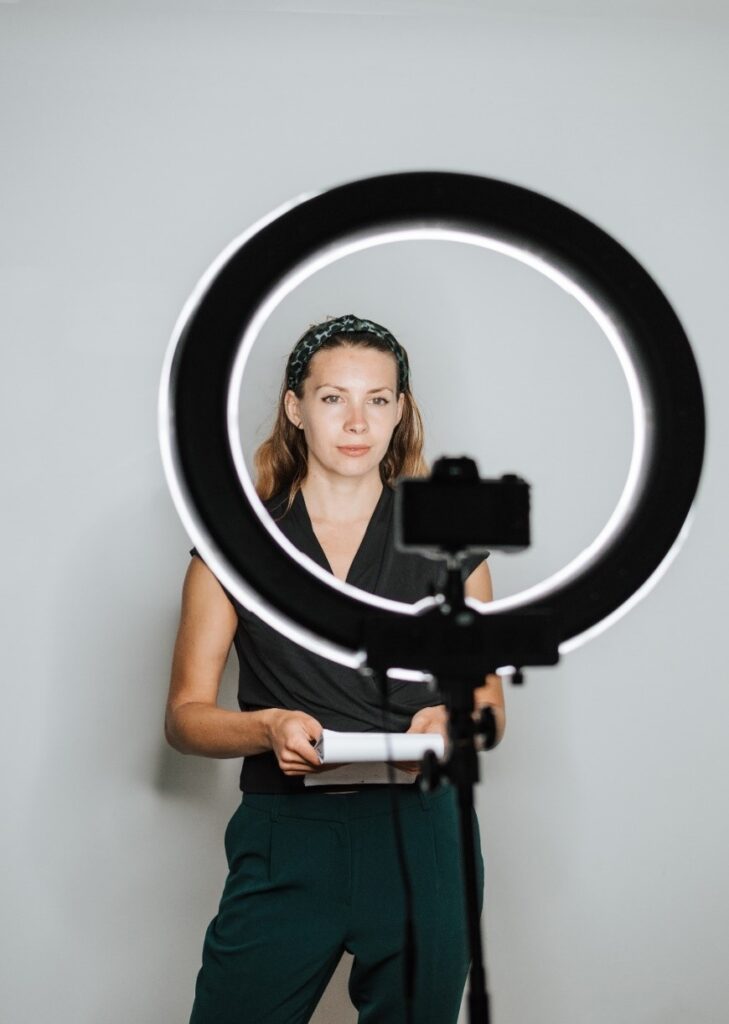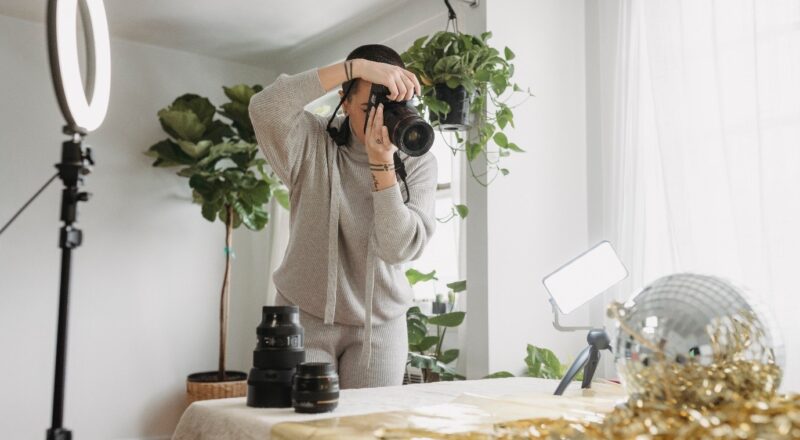What is E-commerce Photography?
E-commerce photography means taking pictures or photographs of products for an online store. It involves the responsibility of product photography and ensuring the best quality picture of the product.
In an E-commerce business, the customers cannot touch, feel, or analyze the product closely, bringing in the importance of product photographs. Product Photography plays an essential role in the e-commerce business for convincing consumers to purchase the product. The consumer appraises visual content as the deciding factor for purchase. Hence, it is necessary to provide the best quality photos of the product to gain trust.

Components on which E-commerce Photography Cost Depends
There are many elements on which the E-commerce product photography depends like
- Local studio
- Full-Service Photography studio
- Pricing of product photo per shot
- Pricing of product photo per product
- Pricing of product photo per hour/ per day
- Additional costs- Models, Props, Reshoot and Editing

Local Studio:
It is essential to choose the right option for eCommerce photography. On a tight budget, one can use a local photographer for product photography in the locality, area, or neighborhood.
Choosing a local studio for eCommerce photography can be helpful in case if there is no time to ship the product for service, shipping cost is saved.
And a minimal fee is required to pay; price negotiation can be done when photographers are willing to deal on pricing, and it always meets the needs of small businesses.
But the availability is limited as the photographer might get fully booked for months because most of the freelance doesn’t work in one thing and may do product photography along with weddings, portraits, etc. It may be quite expensive and provide limited add-on options.
Full-service photography studio:
This offers more eCommerce photographers and more professional work. They provide props, backdrops, and a variety of options for the product photography shot. They can handle any size or quantity of products and are cost-effective as they generally focus on product photography only. Hence, they offer lower rates than independent eCommerce photographers.
Pricing of product photo per photograph:
Both independent eCommerce photographers and service eCommerce photography studios use a standard pricing method: the price of photographs per photo. This includes basic editing or standard editing. One is allowed to select their final product photograph out of various images taken. The cost of the photograph depends on the number of photos, image quality, and editing.
Pricing of product photo per product:
The eCommerce photographer charges the rate of the product photos per the number of the product they shoot. The price depends on factors such as the product’s weight, price of the product, and the number of images produced. If the product is challenging to shoot, then the charge rate of the eCommerce photography is increased.
Pricing of product photo per hour/ per day:

This pricing format is the most common and is difficult in budget. The cost depends on the time taken by the e-commerce photographer to shoot the product, whether it takes half or full days. Time is the only fact for which the photographers are being paid off.
Moreover, if the editing is done, an additional charge per hour is charged in addition to the shoot for an hourly rate.
Additional costs- Models, Props, Reshoot, and Editing:
Whichever studio one goes, be it the independent photographer or service photography studio, they will probably get additional charges for getting the quality and cost-effective product photos.
Models: Some product requires a model for showcasing the product effectively. These products cost for adding a model to the shoot. The photographer may coordinate the shoot fee and the model’s fee or ask you to coordinate your model. Here using a service photography studio is a good suggestion as it has a one-time model fee.
Props: E-commerce product photography can be a crucial element in kicking the content up a notch. There are many simple excellent props like flowers, mirrors, etc., to change the look of the product image. Most of the studios have their collection of props that can be chosen according to the product theme, but this adds the cost for the props.
Reshoot: If the first shot of the product is not liked or there is any mistake from the photographer end the in-service photography studio, the service executes reshoots, but if someone is working with the independent photographer, then another fee is charged to capture another shot.
Editing: Editing generally includes colour correction, lighting adjustments, and retouching the area with small imperfections like dirt, fingerprints, etc. If more advanced editing is necessary or required, then an additional fee is charged.
Other Cost components for E-commerce photography
The other cost components required are for those whose budget is tight and who can’t afford to hire professionals. They are determined to make their studio and be a professional photographer. So the components are:
- DSLR cameras/ Mobile phones are primarily used cameras for eCommerce photography nowadays with prime features.
- The lens depends on the size of the product.
- Tripods lets to set the camera horizontally or parallel according to required shots and at every possible angle.
- Lightings such as Natural light through windows, strobe lighting, and Led lights can be used for artificial light.
- Backdrops such as curtains, scarves, succulents, bedsheets, tables, tools, etc., are readily available and should be used for the background.
- Stands or clamps to place your camera, lighting box, backdrops, or any flat platform for eCommerce photography are suggested.
- Props are readily available at home like flower vases, mirrors, wooden trays or glass, artificial flowers, candles, etc. Use these props to decorate the product for an attractive look.
To know more about Product photography and studio set, visit our blog posts on ‘15 Ways To Improve Product Photography in India and ‘How to build Product Photography Studio at Home.’
